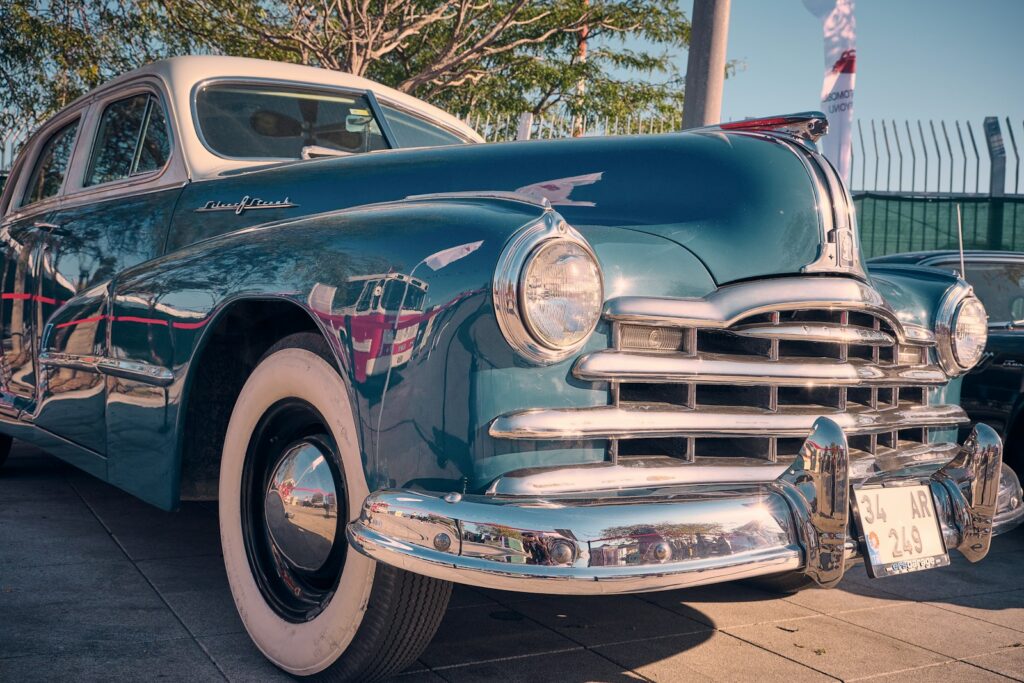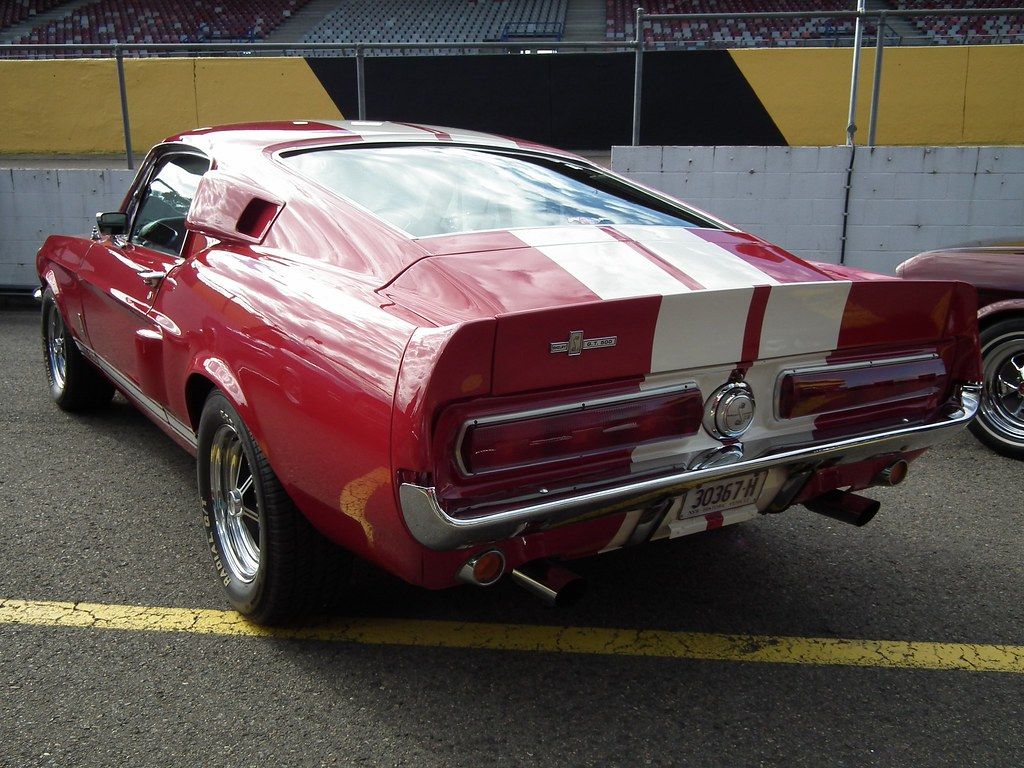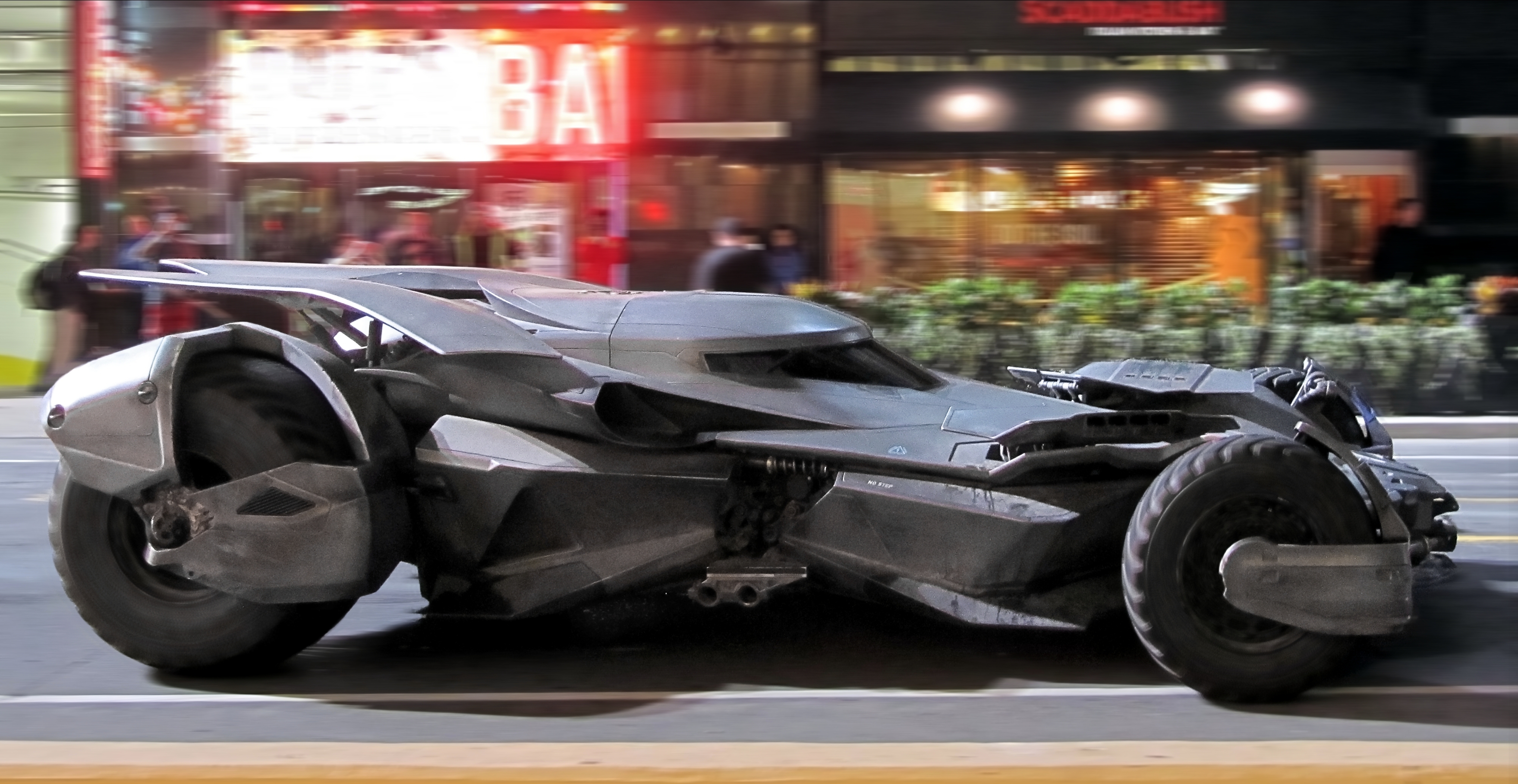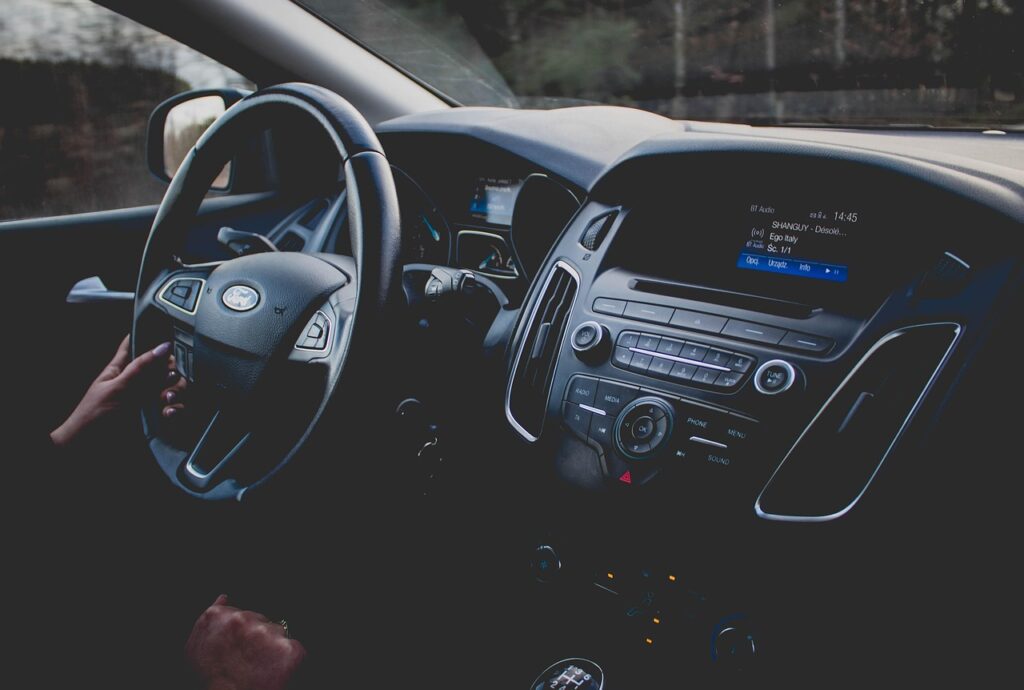
There’s a special magic in the roar of a vintage engine, the gleam of perfectly polished chrome, and the unmistakable scent of a meticulously preserved interior. For decades, classic cars have captivated generations, with baby boomers who drove the original muscle cars sparking a widespread appreciation that continues to grow. Today, new enthusiasts are stepping behind the wheel, drawn to the unique style, the resonant sound, and the raw power that only these automotive legends can offer.
But time, as they say, waits for no one, and even the most revered machines eventually succumb to its touch. That’s where the dedicated art of classic car restoration comes in, breathing new life into these steel and leather masterpieces. Whether your passion lies in discovering a forgotten gem or simply revitalizing a cherished vehicle, expert restoration services are available to transform these once-stalled dreams into living, drivable realities. Services range from comprehensive rotisserie restorations to specialized bodywork, paint jobs, and the meticulous installation of specific parts, ensuring every detail is addressed.
We’re about to embark on a journey through the remarkable transformations of 14 such vehicles, each a testament to the unparalleled skill, passion, and technical acumen required to give a classic car a second chance at life. From early automotive marvels to iconic post-war designs and even a detailed barn find revival, these stories highlight the precision engineering and dedicated craftsmanship that turn rust into pride, and faded memories into gleaming, road-ready masterpieces. Prepare to discover the incredible work that goes into making these historical machines not just run, but truly sing once more.

1. **1917 Locomobile**
Stepping back to the dawn of the automotive age, the 1917 Locomobile represents a pinnacle of early 20th-century luxury and engineering. Restoring a vehicle of this vintage is a profound undertaking, demanding not only a deep historical understanding but also an immense amount of specialized technical expertise. It’s a journey into the origins of modern mechanics, revealing the foundational principles upon which today’s vehicles are built.
The challenges in bringing a Locomobile back to its former glory are manifold. Sourcing original components or fabricating historically accurate replacements requires an intricate network and a craftsman’s touch. Everything from the intricate brass work to the early internal combustion engine’s unique architecture needs careful attention. Specialists in body panel replacement, rust removal, and welding are essential to reconstruct or repair the vehicle’s original form, often dealing with materials and techniques no longer common.
Beyond the visible aesthetics, the mechanical heart of such a venerable machine demands exacting precision. Rebuilding the engine, refurbishing the transmission, and ensuring the electrical system (as rudimentary as it might have been) functions flawlessly are critical. The goal is not just to make it look good, but to ensure it operates as it once did, a moving museum piece that can be driven and enjoyed, proudly showcasing automotive heritage.

2. **1933 Dodge Street Rod**
The 1933 Dodge Street Rod exemplifies a fascinating blend of historical design and modern performance aspirations. Unlike a pure Concours restoration aiming for absolute originality, a street rod seeks to combine the undeniable charm of a classic body with updated components for enhanced drivability and contemporary flair. This approach demands a delicate balance between preserving the Dodge’s vintage soul and integrating custom elements.
RJ CARS, with its expertise in Dodge restorations, would approach such a project with an understanding of both worlds. The process often begins with a thorough rotisserie restoration, stripping the vehicle down to its bare frame. This allows for comprehensive rust removal and structural reinforcement, creating a pristine canvas for the build. Body modifications, while staying true to the iconic 1933 Dodge lines, might involve subtle enhancements or custom fabrications.
The true magic of a street rod lies in its hidden upgrades. While the exterior might retain a classic appearance, the engine, transmission, and suspension systems are typically modernized for performance and reliability. Custom paint jobs and refined upholstery, areas where restoration specialists excel, complete the transformation. The result is a stunning vehicle that commands attention not just for its age, but for its captivating fusion of past and present, a true living, drivable dream.

3. **1937 Cadillac LaSalle Convertible**
For those who appreciate the opulent elegance of pre-war American luxury, the 1937 Cadillac LaSalle Convertible stands as a magnificent example. A Concours-level restoration of such a vehicle is not merely a repair; it is a meticulous recreation of automotive perfection, designed to meet the highest standards of authenticity and presentation. Every curve, every piece of chrome, and every stitch of upholstery must be impeccable.
Specialized shops focus on bringing these grand machines back to their original splendor, emphasizing the intricate details that define their luxury. This includes expert body panel replacement and rust removal, ensuring a flawless foundation for the paintwork. Applying a full paint job to Concours standards requires exceptional skill, often involving multiple layers of careful application and polishing to achieve a depth and brilliance that matches the factory finish.
The interior of a luxury convertible like the LaSalle is equally critical. Upholstery work demands period-correct materials and patterns, meticulously fitted to replicate the original lavish comfort and style. Electrical work, from intricate dashboard gauges to power convertible tops, must function perfectly. The objective is to produce a vehicle that not only performs flawlessly but can also be proudly shown nationally and internationally, earning accolades for its masterful restoration.
Name: LaSalle
Logo: Lasalle cars logo.png
LogoSize: 150
Producttype: Luxury car
Producedby: General Motors
Country: U.S.
Introduced: Alfred P. Sloan
Discontinued: [object Object]
Related: Cadillac
Markets: U.S.
Categories: 1920s cars, 1930s cars, 1940s cars, All articles with unsourced statements, Articles with short description
Get more information about: LaSalle (automobile)
Buying a high-performing used car >>>
Brand: Cadillac Model: LaSalle Convertible
Price: $21,650 Mileage: 17,979 mi.

4. **1939 Ford Tudor Sedan**
The 1939 Ford Tudor Sedan holds a significant place in automotive history as a dependable, ubiquitous vehicle that served countless families during a pivotal era. Restoring a car like this isn’t always about recreating high-end luxury; it’s often about preserving an accessible piece of the past and making it a functional, reliable driver once more. The emphasis here is on practical restoration, ensuring the vehicle can be enjoyed on the road.
The process for such a classic often begins with addressing the inevitable wear and tear accumulated over decades. Comprehensive bodywork, including extensive rust removal and precise body panel replacement, is frequently required to bring the sedan’s solid structure back. Welding expertise is vital to repair any structural compromises, ensuring the integrity and safety of the classic body.
Once the foundation is solid, a full paint job restores the exterior to a vibrant, period-appropriate finish. Mechanical repairs, from the engine to the suspension, are undertaken to ensure smooth operation and reliability. The interior, though perhaps not as extravagant as a luxury model, receives careful attention to upholstery and functional components, ensuring comfort and usability. The result is a charming, drivable piece of history, ready to cruise down memory lane.
Caption: Kilgore, Texas
Name: Ford Model A
Manufacturer: Ford Motor Company
Production: October 1927 – March 1932
ModelYears: 1928–1932
Predecessor: Ford Model T
Successor: ubl
Class: Full-size Ford
Platform: A Chassis
Layout: FR layout
Assembly: Twin Cities Assembly Plant
BodyStyle: Sport coupe, Coupé
Engine: Ford Model A engine, Inline-four engine
Wheelbase: 103.5 in
Abbr: on
Length: 165 in
Width: 67 in
Weight: convert
Aka: GAZ-A
Transmission: Non-synchronous transmission, Manual transmission
Related: Ford Model AA
Designer: Henry Ford, Edsel Ford
Categories: 1900s cars, All Wikipedia articles written in American English, All articles needing additional references, All articles with dead external links, All articles with unsourced statements
Get more information about: Ford Model A (1927–1931)
Buying a high-performing used car >>>
Brand: Ford Model: Tudor Sedan
Price: $21,650 Mileage: 17,979 mi.

5. **1949 Cadillac**
Emerging from the post-World War II era, the 1949 Cadillac represented a bold new direction in American automotive design, characterized by its distinctive tailfins and modern styling. Restoring this iconic vehicle involves capturing the spirit of that optimistic period, bringing back the imposing presence and sleek lines that made it a symbol of progress and prosperity. It’s a project that celebrates a significant turning point in car design.
The comprehensive restoration of a 1949 Cadillac addresses all facets of its construction. Body panel replacement, rust removal, and intricate welding are essential for correcting any damage or deterioration that has occurred over the decades. The vehicle’s expansive body panels and complex curves demand particular skill during the preparation and paint stages to ensure a seamless, mirror-like finish that highlights its unique silhouette.
Furthermore, the interior must be brought back to its original grandeur, involving detailed upholstery work with period-correct fabrics and patterns. Mechanical repairs ensure that the engine, transmission, and electrical systems operate reliably, providing that characteristic smooth Cadillac ride. The ultimate goal is to present a 1949 Cadillac that not only looks stunning but also drives beautifully, embodying the post-war American dream and turning heads wherever it goes.
Name: Cadillac Sixty Special
Caption: 1975 Cadillac Sixty Special Brougham
Manufacturer: Cadillac
Production: 1938–1942,1946–1976,1987–1993
Class: luxury car
Layout: FR layout
Predecessor: Cadillac Series 65
Categories: All articles with unsourced statements, Articles with short description, Articles with unsourced statements from September 2022, CS1 errors: generic name, Cadillac vehicles
Get more information about: Cadillac Sixty Special
Buying a high-performing used car >>>
Brand: Cadillac Model: 1949 Cadillac
Price: $21,650 Mileage: 17,979 mi.

6. **1957 Chevy Nomad**
The 1957 Chevy Nomad is more than just a car; it’s a cultural icon, representing the quintessential American styling of the 1950s with its unique wagon profile and distinctive trim. Its restoration is a tribute to an era of optimism and innovative design, aiming to recapture the cool, laid-back vibe that made it a legend. Enthusiasts cherish its unique blend of utility and unmistakable style.
Bringing a Nomad back to its glory often involves extensive bodywork to ensure the integrity of its signature roofline and expansive side panels. Rust removal and precise welding are critical, especially in areas prone to corrosion, to lay the groundwork for a flawless finish. The chrome trim, so integral to the ’57 Chevy aesthetic, requires meticulous restoration or replacement to gleam as it did when new.
Furthermore, a comprehensive restoration addresses the mechanical components, ensuring the powertrain performs as powerfully and smoothly as it once did. The interior, with its distinctive two-tone options and comfortable seating, is meticulously re-upholstered to factory specifications. The end result is a vibrant, road-ready piece of automotive art that commands attention, reminding everyone of the enduring appeal of 1950s American design and engineering.

7. **1963 Thunderbird – 2018 Barn Find Restoration**
Few stories in the world of classic cars resonate as deeply as that of a barn find, and the 1963 Thunderbird unearthed in Strasburg, CO., is a perfect example. This vehicle, after sitting for several years, was brought back to life through a dedicated restoration, transforming it from a forgotten relic into a proud driver. The initial assessment revealed a car that, despite its rough edges and several touch-ups meant to stave off rust, still had good compression across all eight cylinders, a promising sign for its revival.
The restoration process began with a thorough mechanical overhaul. The engine was carefully pulled out, meticulously refurbished, and the transmission completely rebuilt, addressing an initial issue of slipping that presented itself on the drive back to the shop. This comprehensive attention to the powertrain ensures the Thunderbird’s heart beats strong and reliably once more, ready for the open road.
Body and interior work followed suit, breathing new life into the aging shell. The car received a stunning new two-tone paint job, carefully chosen to be the correct blue color based on the original paint code, restoring its exterior elegance. Concurrently, the upholstery was renewed, bringing back the interior comfort and style that defined the Thunderbird experience. Suspension work was also completed, ensuring a smooth and enjoyable ride.
Specific attention was paid to the vehicle’s unique characteristics and problem areas. Remarkably, the only significant rust found was in the battery tray and the passenger rear tail light bucket, which were expertly addressed. The factory hydraulic wipers, operating off the power steering pump, and the distinctive break-away steering column were preserved, highlighting unique features of this model. An important recommendation for cars of this age is the installation of a new wiring harness to prevent electrical shorts and fire due to common insulation cracking, a crucial step for long-term safety and reliability.
While intended as a driver, the restoration aimed to keep things looking “pretty close to how they would have rolled off the assembly line,” with only minor upgrades. These included the new two-tone paint, an aftermarket carburetor for improved performance, and some tasteful chrome 17-inch rims. This careful balance ensured the 1963 Thunderbird retained its classic charm while being perfectly equipped for modern driving, a truly rewarding journey from a dusty barn to a cherished classic.”
Now, let’s continue our journey, shifting our focus to the raw power and distinctive style of late-model classics and muscle cars. These vehicles represent a thrilling era of automotive innovation, from spirited European roadsters to legendary American powerhouses, each demanding specialized craftsmanship and technical prowess to restore their high-octane glory.

8. **1957 Plymouth Belvedere**
The 1957 Plymouth Belvedere, a true symbol of late 1950s American automotive design, often arrives in restoration shops as a testament to its era’s bold styling and burgeoning horsepower wars. Its iconic “Forward Look” design, characterized by sweeping fins and chrome accents, presents a unique challenge and opportunity for restoration specialists. Bringing such a vehicle back to life means meticulously preserving its original aesthetic while ensuring its mechanical prowess for today’s roads.
A comprehensive restoration of a Belvedere typically begins with a thorough assessment of its body and frame. Decades of exposure often necessitate extensive body panel replacement and the careful removal of any rust that has taken hold. Expert welding ensures the structural integrity is fully restored, providing a solid foundation for a flawless finish. The extensive chrome, a hallmark of 1950s design, demands meticulous re-chroming or polishing to achieve its original brilliance.
Underneath that stunning exterior, the mechanical heart of the Belvedere receives paramount attention. Mechanical repairs are essential, ensuring the engine and transmission perform with the robust power expected of a late-50s American classic. This often involves complete engine rebuilds, transmission overhauls, and detailed electrical work to guarantee reliability. The interior also receives significant care, with upholstery work replicating original patterns and materials to restore comfort and period-correct style for any proud owner.
This process transforms a timeworn Belvedere into a magnificent, drivable piece of history. Whether destined for local cruises or national shows, the restored 1957 Plymouth Belvedere stands as a shining example of American ingenuity, ready to command attention and evoke nostalgia wherever it rolls.
Car Model Information: 1967 Plymouth Belvedere II Convertible
Caption: 1958 Plymouth Belvedere 2-door hardtop
Name: Plymouth Belvedere
Manufacturer: Plymouth (automobile)
Production: 1954–1970
Predecessor: Plymouth Cranbrook
Successor: Plymouth Satellite
Class: Full-size
Layout: FR layout
Categories: 1960s cars, 1970s cars, Articles with short description, Cars introduced in 1954, Commons category link is on Wikidata
Get more information about: Plymouth Belvedere
Buying a high-performing used car >>>
Brand: Plymouth Model: Belvedere
Price: $22,999 Mileage: 78,620 mi.

9. **1960 Triumph TR3A**
Shifting gears across the Atlantic, the 1960 Triumph TR3A embodies the spirited charm and open-air thrill of a classic British roadster. Restoring such a nimble, iconic vehicle demands a specialized approach that respects its European engineering and unique design philosophy. These cars, celebrated for their engaging driving experience and often diminutive size compared to American muscle, require precise attention to every detail.
The restoration journey for a TR3A frequently starts with addressing its compact body and chassis, which can be susceptible to rust, especially given its age. Body panel replacement, precision welding, and comprehensive rust removal are crucial steps to ensure the vehicle’s structural integrity. This meticulous groundwork is vital for maintaining the TR3A’s crisp lines and elegant proportions.
Beneath the sleek bonnet, the TR3A’s engine and mechanical systems require careful refurbishment to deliver that characteristic lively performance. Rebuilding the four-cylinder engine, overhauling the transmission, and meticulously restoring the electrical system are key components of mechanical repair. The interior, designed for an immersive driving experience, also receives careful attention, with upholstery work focused on period-correct materials for seats and door panels.
Ultimately, a restored 1960 Triumph TR3A represents a triumph of craftsmanship, bringing back a piece of European automotive history that’s ready to conquer winding roads and turn heads. Its revival is a testament to the dedication required to maintain the legacy of these delightful, driver-focused machines.
Car Model Information: 1962 Triumph TR3A
Name: Triumph TR3
Caption: 1957 Triumph TR3
Production: 1955–1962
Manufacturer: Standard Motor Company
Class: Sports car
Predecessor: Triumph TR2
Layout: FR layout
Successor: Triumph TR4
Engine: ubl
Transmission: manual transmission
Wheelbase: cvt
Length: cvt
Width: cvt
Height: cvt
Weight: cvt
Assembly: ubl
Sp: uk
Categories: 24 Hours of Le Mans race cars, All articles with unsourced statements, Articles with short description, Articles with unsourced statements from January 2008, Articles with unsourced statements from November 2019
Get more information about: Triumph TR3
Buying a high-performing used car >>>
Brand: Triumph Model: TR3A
Price: $5,950 Mileage: 0 mi.

10. **1965 Chevy Corvette**
The 1965 Chevy Corvette, an icon of American performance, represents the pinnacle of mid-1960s sports car design, known for its sleek Sting Ray body and formidable powerplants. Restoring a Corvette of this vintage is about rekindling a legend, ensuring every curve, every engine roar, and every detail speaks to its heritage as a true American classic. It’s a project that demands precision and a deep appreciation for its engineering.
The fiberglass body of a C2 Corvette requires specialized handling during restoration. Body panel replacement, careful repair of stress cracks, and meticulous surface preparation are paramount before a full paint job can be applied. Achieving the iconic, mirror-like finish that defined these cars requires exceptional skill, highlighting the aggressive yet elegant lines of the Sting Ray.
Mechanically, the 1965 Corvette often comes equipped with potent V8 engines, and its restoration is a highlight of the process. Complete engine rebuilds, transmission overhauls, and careful attention to the suspension and braking systems are essential to bring back its exhilarating performance and ensure modern drivability. Electrical work is also crucial, guaranteeing all gauges, lights, and power accessories function perfectly.
The interior, with its driver-focused cockpit, is meticulously re-upholstered using period-correct materials and patterns. This ensures that stepping inside feels like a journey back to the golden age of American sports cars, combining comfort with classic style. The aim is to create a Corvette that not only looks stunning on the show field but also delivers an authentic and thrilling driving experience.

11. **1966 Dodge Coronet 500 Hemi**
For enthusiasts of raw American power, the 1966 Dodge Coronet 500 Hemi stands as an undisputed legend, a vehicle born in the heart of the muscle car era with an engine that dominated drag strips and ignited imaginations. A high-level restoration of this formidable machine is a deep dive into Mopar performance, focusing on bringing back its brutal power and distinctive, no-nonsense styling.
The body of a 1966 Coronet 500 requires robust attention to detail, often involving comprehensive body panel replacement and meticulous rust removal. Welding expertise is critical to restoring the structural integrity that can withstand the immense power of its Hemi engine. A full paint job in a period-correct color, often a vibrant hue, is then applied to highlight its aggressive stance and muscular lines.
The heart of this beast, the Hemi engine, is undoubtedly the focal point of its mechanical restoration. This specialized engine demands expert rebuilds, ensuring every component from the carburetors to the exhaust system performs to factory specifications, unleashing its full, legendary horsepower. Transmission overhauls and a robust driveline are also critical to handle the immense torque.
Upholstery work brings the interior back to its purposeful, performance-oriented state, using materials and patterns that match its original design. The objective is to produce a restored 1966 Dodge Coronet 500 Hemi that not only looks impeccable but also performs as powerfully and authentically as it did when it first thundered off the assembly line, a true testament to Mopar engineering.
Name: Dodge Coronet
Caption: 1967 Dodge Coronet R/T
Manufacturer: Dodge
Production: 1949–1959,1965–1976
Class: Full-size
Predecessor: Dodge Custom
Successor: Dodge Dart
Layout: FR layout
Categories: 1950s cars, 1970s cars, All articles with dead external links, All articles with unsourced statements, Articles with dead external links from June 2016
Get more information about: Dodge Coronet
Buying a high-performing used car >>>
Brand: Dodge Model: Coronet 500
Price: $21,650 Mileage: 17,979 mi.

12. **1967 Ford Mustang Shelby GT500**
Few names evoke as much awe in the muscle car world as the 1967 Ford Mustang Shelby GT500, a collaboration that fused Ford’s iconic pony car with Carroll Shelby’s racing prowess. Restoring a GT500 is not merely about bringing a car back to life; it’s about preserving a piece of automotive royalty, meticulously recreating the performance and style that made it a legend. Every detail, from its aggressive styling to its potent engine, is crucial.
The distinctive bodywork of a Shelby GT500, with its unique scoops, spoilers, and fiberglass components, demands specialized restoration techniques. Body panel replacement, careful alignment of all custom Shelby parts, and thorough rust removal ensure a flawless canvas. Applying a show-quality full paint job, often in its iconic factory colors, perfectly accentuates its aggressive, racing-inspired aesthetic.
Mechanically, the GT500’s big-block engine, whether a 428 Cobra Jet or another powerful variant, is the core of its legend. Expert engine rebuilds are essential to restore its immense horsepower and torque, ensuring it performs with the exhilarating authority expected of a Shelby. Transmission and suspension systems are also thoroughly overhauled to handle the power and provide a responsive driving experience.
The interior is restored to its original, performance-focused specifications, with period-correct upholstery, gauges, and trim. This attention to detail ensures that the restored 1967 Shelby GT500 is not just a showpiece but a thrilling, authentic driving machine. It stands as a powerful testament to the golden age of muscle cars and the enduring legacy of Carroll Shelby.
Name: Shelby Mustang
Caption: 1965 Shelby Mustang GT350
Manufacturer: Unbulleted list
Aka: Unbulleted list
Production: Unbulleted list
Designer: John Chun
Assembly: Unbulleted list
Class: Unbulleted list
Platform: Unbulleted list
Related: Ford Mustang (first generation), Ford Mustang (fifth generation)
Layout: Front-engine, rear-wheel-drive layout
Categories: 1970s cars, 2000s cars, 2010s cars, 2020s cars, All Wikipedia articles written in American English
Get more information about: Shelby Mustang
Buying a high-performing used car >>>
Brand: Ford Model: Mustang Shelby GT500
Price: $21,650 Mileage: 17,979 mi.

13. **1968 Chevy Camaro RS-SS**
The 1968 Chevy Camaro RS-SS represents a quintessential piece of American muscle car history, combining Chevrolet’s sleek styling with potent performance packages. A comprehensive restoration of this iconic model involves meticulously recreating its aggressive stance, refined details, and exhilarating power. It’s about celebrating a car that defined a generation and remains highly coveted by collectors and enthusiasts alike.
Restoration begins with a thorough rotisserie process, stripping the Camaro down to its bare metal to address any body panel replacement or rust removal. The classic lines of the 1968 Camaro require precise metalwork and welding to ensure a perfectly straight and true body. This foundation is essential for a high-quality, full paint job, expertly applied in original factory colors to showcase its timeless design.
Under the hood, the RS-SS designation signifies a serious commitment to performance. Mechanical repairs include comprehensive engine rebuilds, often for powerful V8s, ensuring the powertrain delivers its full, raw horsepower. Transmission overhauls, along with meticulous attention to the suspension and braking systems, are critical for both performance and safety, providing a truly exhilarating driving experience.
The interior of a 1968 Camaro RS-SS is equally important. Upholstery work focuses on period-correct materials and patterns, from bucket seats to door panels, recreating the authentic feel of its performance-oriented cockpit. The goal is to bring this legendary machine back to its prime, ready to be driven and admired, embodying the spirit of classic American muscle with unmatched style and power.

14. **1969 Dodge Charger RT**
To conclude our journey through revived automotive legends, we arrive at the 1969 Dodge Charger RT, arguably one of the most recognizable and revered muscle cars ever built. Its distinctive “Coke bottle” styling, hidden headlamps, and aggressive presence made it an instant classic, cemented by its cultural impact. Restoring a Charger RT is about resurrecting an icon, bringing back its imposing power and unmistakable style.
The restoration of a 1969 Charger RT typically involves extensive bodywork, including body panel replacement and comprehensive rust removal, to perfect its unique silhouette. Welding expertise is paramount to ensure the structural integrity matches the robust build quality of its era. A full paint job, applied with precision, revives its factory finish, often in a bold, attention-grabbing color that highlights its muscular lines and aggressive stance.
Underneath its intimidating hood, the Charger RT’s potent engine, frequently a big-block V8, is the focus of intense mechanical restoration. Expert engine rebuilds, transmission overhauls, and meticulous attention to the driveline and suspension ensure that its legendary horsepower and torque are fully unleashed and reliably delivered to the pavement. Specialized MOPAR parts are sourced to maintain authenticity and performance.
The interior is also brought back to its original glory, with meticulous upholstery work recreating the performance-oriented cockpit, complete with bucket seats and crisp dash instrumentation. The restored 1969 Dodge Charger RT isn’t just a car; it’s a statement, a testament to American power and design, ready to command the road and captivate onlookers, carrying its iconic legacy proudly into the future.
Name: Dodge Charger (1966)
Layout: FR layout
Caption: 1969 Dodge Charger R/T
Manufacturer: Dodge
Successor: Dodge Magnum#1978
Production: 1966–1978
Class: Mid-size, Muscle car
Platform: Chrysler B platform
Categories: 1960s cars, 1970s cars, All articles needing additional references, Articles needing additional references from January 2014, Articles with short description
Get more information about: Dodge Charger (1966)
Buying a high-performing used car >>>
Brand: Dodge Model: Charger RT
Price: $21,650 Mileage: 17,979 mi.
From the earliest luxury vehicles to the roaring muscle cars that defined an era, each restoration project featured here is a testament to unwavering dedication and extraordinary skill. These vehicles, once silent relics, now thunder with renewed life, embodying the passion of their owners and the mastery of the craftsmen who bring them back. It’s more than just fixing old cars; it’s about preserving history, celebrating engineering, and ensuring that the style, sound, and power of these automotive legends continue to captivate enthusiasts for generations to come. Whether for show, street, or pure driving enjoyment, the legacy of these restored classics truly lives on.



